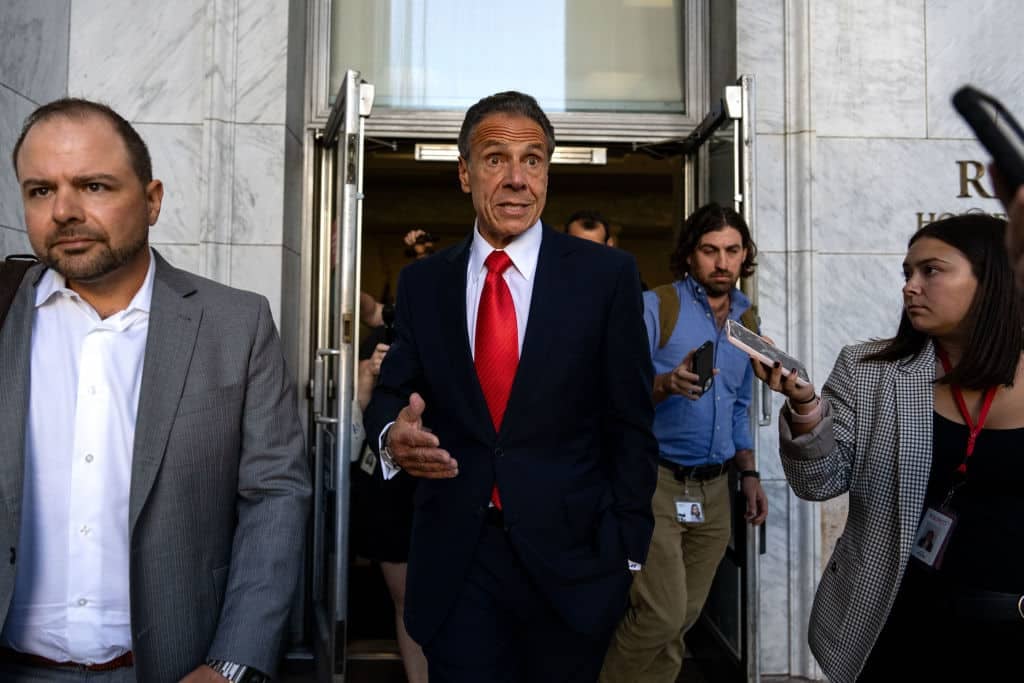Former New York Governor Andrew Cuomo admitted during a congressional hearing that he did not consult public-health authorities before his administration ordered nursing homes to admit COVID-positive patients in March 2020. This controversial directive, which was issued to alleviate pressure on overwhelmed hospitals, has been criticized for potentially contributing to the spread of the virus in nursing homes, resulting in thousands of deaths.
The heated exchange took place during a House Select Subcommittee on the Coronavirus Pandemic hearing, chaired by Representative Brad Wenstrup (R., Ohio). Wenstrup questioned Cuomo about his administration’s March 25, 2020 directive, which ordered nursing homes to accept COVID-positive patients without ensuring they could follow federal safety guidelines from the Centers for Disease Control and Prevention (CDC). These guidelines advised against admitting COVID-positive patients unless facilities could safely manage them.
Cuomo admitted that he did not personally consult with federal public-health authorities before issuing the directive, but emphasized that New York’s health department was consistently issuing public-health guidance during the early stages of the pandemic. Despite Cuomo’s admission, he remained defiant, insisting that his administration’s actions were based on the best available information at the time.
National Review explains Wenstrup challenged Cuomo’s decision, pointing to federal guidance that warned against such actions. “You are the leader. The buck stops with you — or at least it should,” Wenstrup said, accusing Cuomo of altering the methodology of reporting nursing home deaths by removing out-of-facility fatalities, which he claimed obscured the true impact of the directive.
More than 9,000 COVID-positive patients were admitted to New York nursing homes following the directive, contributing to a surge of infections and deaths in these facilities. Cuomo, however, denied that the directive was the primary cause of the virus’s spread, instead blaming asymptomatic staff members who unknowingly brought the virus into nursing homes.
Cuomo’s testimony followed the panel’s review of over half a million documents and testimonies from his administration officials. The hearing also highlighted a July 2020 report commissioned by Cuomo’s office that removed hospital deaths from the tally of nursing home fatalities. Republican lawmakers argued that this move was an intentional effort to downplay the true scale of the nursing home crisis. Cuomo maintained that the exclusion of hospital deaths did not affect the overall COVID-19 death toll.
Throughout the hearing, Cuomo repeatedly sought to deflect responsibility, accusing the Trump administration of weaponizing the Justice Department to attack his handling of the pandemic. He also cited a New York Attorney General study that he claims vindicated his nursing home directive, despite evidence presented by Republicans to the contrary.
The hearing turned contentious when Representatives Elise Stefanik (R., N.Y.) and Marjorie Taylor Greene (R., Ga.) confronted Cuomo about his pandemic management and other controversies. Greene also questioned Cuomo about the recent indictment of Linda Sun, a former staffer accused of being a Chinese spy, which Cuomo downplayed as unrelated to his administration.
Despite the controversy, Cuomo has maintained his innocence both in relation to the nursing home scandal and the sexual harassment allegations that led to his resignation in 2021. His brother, Chris Cuomo, also faced scrutiny for privately advising him during the scandal, leading to his departure from CNN.
Before the hearing concluded, Wenstrup issued a subpoena to current New York Governor Kathy Hochul for additional documents from the Cuomo administration that have not yet been provided. Hochul, Cuomo’s former lieutenant governor, succeeded him after his resignation.
